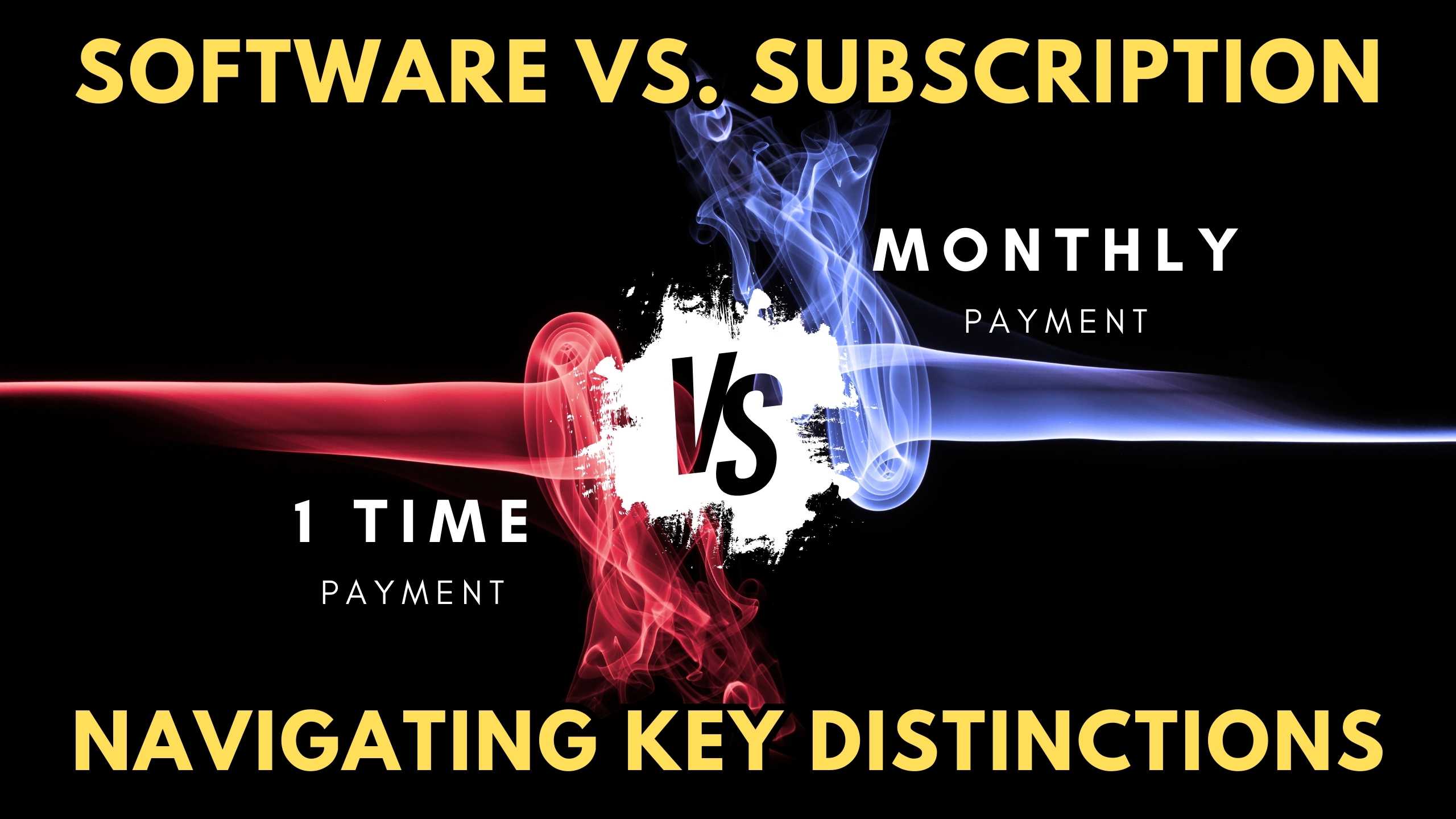Software vs. Subscription: Navigating Key Distinctions
- Expense Management Software Credit Cards Investing Business Solutions


Software vs. Subscription: Navigating Key Distinctions
In the ever-evolving landscape of technology, the distinction between traditional software and subscription-based services is becoming increasingly important. Understanding these differences is crucial for businesses and individuals alike as they navigate the choices available to them. Let’s delve into the key distinctions between software and subscription models and explore how they impact users and businesses.
Traditional Software: Ownership and Upfront Costs
Traditional software, often referred to as on-premise software, involves a one-time purchase and ownership of the software license. Users pay an upfront cost, typically a significant investment, to acquire the software permanently. This model has been the norm for decades, providing users with a sense of ownership and control over their software.
However, one major drawback is the substantial upfront expense, making it challenging for small businesses or individuals to access advanced software solutions without a significant financial commitment.
Subscription Models: Accessibility and Continuous Updates
In contrast, subscription-based models offer a more accessible entry point. Users pay a recurring fee, usually on a monthly or annual basis, to access the software and its updates. This approach provides greater flexibility, allowing users to adjust their usage based on changing needs. Additionally, subscription models often include ongoing support and continuous updates, ensuring users always have access to the latest features and improvements.
Flexibility and Scalability
One of the key advantages of subscription-based services is the flexibility they offer. Users can scale their usage up or down based on demand, making it particularly beneficial for businesses with fluctuating needs. This scalability is often challenging to achieve with traditional software, which may require additional licenses or upgrades for increased usage.
Collaborative Capabilities
Many SaaS products enhance collaboration among team members, regardless of their physical location. Tools like Slack and Microsoft Teams facilitate real-time communication and collaboration, promoting efficiency and connectivity in the modern workspace.
Data Security and Maintenance
Subscription-based models often include cloud-based solutions, ensuring that data is securely stored and easily accessible from multiple devices. LastPass and Norton 360 are examples of SaaS products that prioritize data security and regular updates, reducing the burden of maintenance on users.
Conclusion
The choice between traditional software and subscription models ultimately depends on individual or business needs, budget constraints, and preferences. While traditional software offers ownership and control, subscription models provide accessibility, continuous updates, and flexibility. As technology continues to advance, understanding these distinctions is crucial for making informed decisions that align with specific requirements.
Ready to Explore Your Software Options?
Take control of your software choices with Subscribed.fyi! Sign up for free today and unlock exclusive deals on 100+ SaaS tools, saving you over $100,000 per year. Manage all your subscriptions effortlessly, compare features, pricing, and user reviews, and make informed decisions with Subscribed.fyi!
Sign up now and unlock secret deals!
Relevant SaaS Products:











